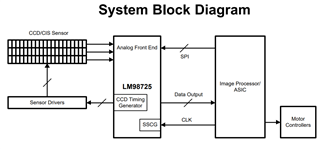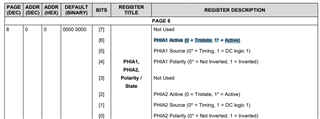Other Parts Discussed in Thread: DS90CR218A
Hi all,
I want to use LM98725 for CIS sensor.
Can LM98725 be used for CIS Sensor?
I want to use STM32H723xx. (MCU)
This thread has been locked.
If you have a related question, please click the "Ask a related question" button in the top right corner. The newly created question will be automatically linked to this question.
Hi all,
I want to use LM98725 for CIS sensor.
Can LM98725 be used for CIS Sensor?
I want to use STM32H723xx. (MCU)
Hello shshin,
Thank you for your interests in the LM98725. We will look into this inquiry. Please expect a response by 3/31.
Best regards,
Bill Chieng
Hello shshin,
I believe you reached out to TI support regarding this part. You will receive a follow up with a more detailed response. Regarding your questions above:

Hi Bill Chieng.
Can you tell me your email?
Can you review or Confirm the circuit I designed?
The output of LM98725 from DOUT0 to DOUT7 is connected with DS90CR218A input.
However, is it right to connect the output of DS90CR218A to the MCU?
And 21Bit, should I connect all 21Bit to MCU? I don't quite understand this part.
I don't know how the output of DS90CR218 comes out. Why 21bit?
Hello shshin, I am not familiar with the DS90CR218A. I would suggest reaching out and creating a new post for DS90CR218A to answer your concerns regarding that part (DS90CR218A).
Another output format, the LM98725 also offer CMOS output format (must be configured accordingly). Can you refer to “4.23 CMOS Output Format” to determine if this what you are expecting for your MCU input (in your case: PSSI pin)
I've sent a private message to you with my email contact.
Although, I want to inform you that system-level support for this device is limited. Support is limited to what is provided in the datasheet.
Regarding your follow up thread:
Please refer to datasheet “4.15.4 Support for CIS Sensors” to determine if your CIS sensor is supported with this device.
NC for PHIA1,2 PHIB1,2 PHIC1,2?
Yes, I would advise looking at the register definitions (table 18 in the datasheet) to set the appropriate PHIA1,2 PHIB1,2 PHIC1,2 registers accordingly (for instance, avoid turning those pins active). Based on the register definitions, pins are in Tristate.

Best regards,
Bill Chieng
Hello shshin,
I would refer you to the pin description below:

This is on page 4 of the datasheet. Set the XTALEN bit accordingly. I would interpret NC as no connection, for the previous question "PHIA1,2 PHIB1,2 PHIC1,2" are okay to ground as long as you configure the register accordingly (setting these pins as tristate).
Best regards,
Bill Chieng